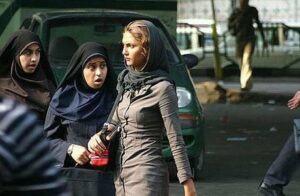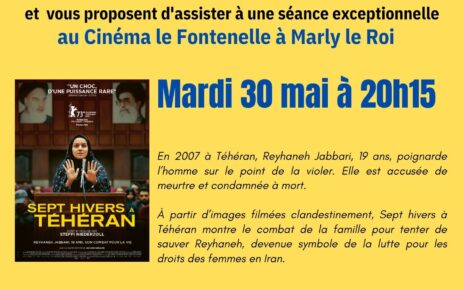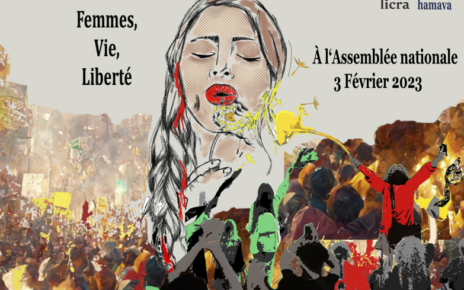The Industry of Oppression & Crime against Iranian Women
Enforcing mandatory hijab rules costs the Iranian government 40 to 45 trillion Tomans per year, according to Iran Open Data estimates (about $8.1-9.1 million, at an exchange rate of 49,100 Tomans/$1).
This amount is equivalent to the current monthly income of 6 to 7 million individuals if they earn minimum wage. According to the Supreme Labor Council, the minimum wage for 31 working days is set at 5,485,000 Tomans ($112). For individuals with dependents, the minimum income, depending on the number of their children, is 8 million Tomans ($163) at best.
The cost of enforcing mandatory hijab laws is subsidised by Iranian taxpayers in two ways.
First, there are indirect costs, in which the government, on behalf of the people, allocates a portion of financial resources, such as proceeds from oil sales and tax revenues, for hijab enforcement. Iran Open Data estimates show that in the current 1402 budget, it is around 9 trillion Tomans (about $183 million).

There are also direct costs. Iranian women and children have to purchase specific items of clothing, such as manteaus and head coverings. Based on average estimates, these expenses amount to over 36 trillion Tomans ($730.9 million) per year.
Part 1: Estimation of Indirect Costs
The annual budget law does not explicitly mention “hijab and modesty”. However, significant amounts are evidently allocated each year by institutions and government agencies for the promotion, advertisement, and enforcement of compulsory hijab.
In the resolution of session number 820 of the Supreme Council of the Cultural Revolution dated September 3, 2019, four duties have been defined for all executive agencies, public institutions, government institutions, and units that utilize government money:
- Supervision over the observance of hijab and modesty
- Reform and defining regulations and guidelines to prevent improper hijab
- Raising awareness about the benefits of modesty and hijab
- Creating a suitable working environment for women
Typically, the cost of hiring for hijab supervisors, preparation of guidelines, advertising, and “creating a suitable working environment” for women is funded by public financial resources.
If we assume that public organizations, banks, and government-affiliated institutions allocate one-thousandth of their expenses to meet the requirements of the Supreme Council of Cultural Revolution regarding hijab, then the total budget spent on hijab this year would amount to over 5 trillion Tomans ($101.4 million).
But that’s not all. In the same resolution, specific responsibilities have been defined for 27 publicly funded executive organizations.
In the current 1402 budget bill, the total appropriations for the operational expenses of these organizations, which are mentioned in table 7, amount to over 747 trillion Tomans ($15.1 billion).
There is no mention of the expenses related to the implementation of the hijab and modesty regulations in the budget. However, we have attempted to estimate these expenses through defining three conservative scenarios that provide an approximate estimate.
These 27 executive departments are divided into four main categories.
Advertising and Cultural Departments
- Scientific and Educational Departments
- Executive Departments
- Supporting Departments
In the first scenario, which is very optimistic, we assumed that an amount equivalent to 1% of the current budget of advertising institutions, in addition to the budget of law enforcement agencies, and one thousandth of the budget of educational, executive, and service institutions, would be allocated to the implementation of the resolution of the Supreme Council of Cultural Revolution. In this case, the total cost of implementing mandatory hijab and modesty would be approximately 1.566 trillion Tomans ($31.7 million).
In the second scenario, we assumed that 5% of the current budget of advertising institutions, 2% of the budget of law enforcement agencies, and one-hundredth of the current budget of educational, executive, and service institutions would be allocated to the implementation of mandatory hijab and modesty. In this case, the estimated cost for these institutions to fulfill the requirements of the Supreme Council of Cultural Revolution would be over 3.8 trillion Tomans ($77 million).
In the third scenario, we assumed that 10% of the current budget of advertising institutions, 5% of the budget of law enforcement agencies, and one two-hundredth of the current budget of educational, executive, and service institutions would be allocated for this purpose. In this case, the budget for these 27 institutions to implement the hijab and modesty requirements would reach approximately 8.946 trillion Tomans ($181.4 million).
Part 2: Estimating the Cost of Imposing Compulsory Hijab
In the second part, we attempt to estimate the cost of imposing compulsory hijab on Iranian families using minimum coverage estimates.
Based on the various types of dress code acceptable in schools, administrative offices and public places, the following assumptions have been made, taking into account the median market prices in April 2023 and the population estimates of the Statistical Center of Iran:
- All women over the age of 7 (some 36,714,000 women) purchase two manteaus annually at an assumed average price of 250,000 Tomans ($5), and two manteaus with an average price of 95,000 Tomans ($1.93).
- All women over the age of 15 (some 31,841,000 women) annually purchase four sets of shawls and headscarves at an assumed average price of 70,000 Tomans ($1.40).
- 10% of women over the age of 15 (3,184,000 women) voluntarily or compulsively wear a chador in some administrative spaces and public places, annually purchasing two chadors at an assumed average price of 700,000 Tomans ($14.23).
The cost of imposing mandatory hijab on Iranian women amounts to over 35 trillion Iranian Tomans ($711 million) per year. This is a cost that could otherwise be spent on discretionary matters, such as clothing according to individuals’ tastes and preferences.
The direct cost of 35 trillion Tomans ($711 million) and the total indirect cost of 45 trillion Tomans ($9.1 million) for enforcing mandatory hijab is a significant figure relative to Iran’s economy. It has the potential of turning individuals into staunch defenders of mandatory hijab in Iran. Public institutions, inspectors, officials, and those who import, sell, and produce hijab-related goods and whose work and livelihood are tied to mandatory hijab are sure to be influenced by this large sum of money.
Source: Iran Open Data




